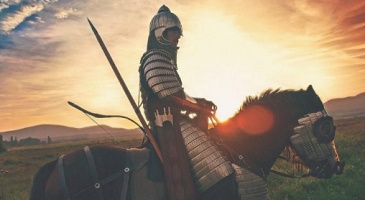What is a dictatorship?
We explain what a dictatorship is and how its development was throughout history. Also, what is totalitarianism?
-
What is a dictatorship?
A dictatorship is a system or regime of government through which a person (or a small group of them) governs in an absolute and arbitrary manner, without any type of restriction when making decisions.
The word dictatorship has its etymological root in the Latin participle “dictus” , which means to say or indicate. For its part, the suffix -ura refers to the concrete result of something. In this way, dictatorship means the result of what a person says or indicates . The suffix -or refers to the agent, thus forming the word dictator.
A dictatorship is a way of exercising power, based on the absolute leadership of a person or a very small group . It is a form opposite to democracy , being the bases of this one the popular participation and the division of powers. In a dictatorship when all power is centered on a person who, on occasion, chooses to delegate decisions to people he trusts.
During a dictatorship there is no opposition or supporter (single party from Modernity) or personal or group (due to censorship, persecutions, etc.). Many times the dictator usually has certain charismatic characteristics that make him very dear to the people, but if not, every dictator has the use of force as the ultimate (or first in many cases) form of coercion.
The use of propaganda is one of the most characteristic elements of dictatorial systems, with newspapers, television and radio monopolized by the regime. North Korea, for example, prohibits the use of the Internet freely for its citizens, as it is a form of freedom of expression that this country does not support.
Persecution and torture, the publication of lists of suspects and the constant use of police and military force are very common elements in these types of systems.
-
The dictatorships throughout history
The connotation that is currently given to dictatorial systems is typical of our time, since the characteristics of dictatorships existed in many regimes throughout history and have not been subject to savage criticism (regardless of the authoritarian or bloody that have been sovereigns or specific regimes).
This is mainly due to the fact that ancient societies did not know democracy as such ; instead, the atrocities that different dictatorships have committed throughout the last century give clear evidence of how terrible it can be to make people live. Under the shadow of a dictator
It is very common to find references of “dictators” among historical texts, referring to certain rulers of Ancient Rome , since being governed in the form of a Republic for most of their time, some dared to pass over it and govern your way.
The situation changes when we refer to monarchs in the Middle Ages, since the control they had over their subjects was absolute, we cannot speak of dictatorship in a monarchy , since the monarchy establishes in itself all power in one person . However, it is necessary to make a distinction: not every monarchy has to share the oppressive and extremely violent features that a dictatorship has, but it would not be correct to use this label for this historical period.
It is with the arrival of Modernity and with the political and social revolution that the French Revolution brought about that people began to be thought of as the true makers of their destiny and government. The ruler was no longer the representative of God on earth, nor an external will alien to everything that happened. This is how people become citizens for the first time , being the ruler the result of popular expression.
Unfortunately, as we all know, the story does not follow a linear and progressive development. The nineteenth century has shown ample samples of great dictators , but it was undoubtedly the twentieth century the bloodiest in history, the one that claimed the most human victims and gave birth to the greatest dictators of all time.
The great movements are characteristic of the century that ended a little over a decade ago. Social discontent reigned in many cases, nationalism was common currency and everything was the perfect breeding ground for charismatic leaders to emerge from the crowd (Lenin, Hitler, to name a few). Now, the traumatic experiences of Italian fascism , German Nazism and even Stalin communism , forced a new distinction within dictatorships: totalitarianism.
-
Totalitarianisms

Totalitarianism is a particular type of dictatorship in which all political and social cultural expressions are referred to a leader, a party representative, generally charged with strong nationalist ideas and a great ideological bias.
Both the Hitler, Stalin and Mussolini regimes were responsible for placing all the ideological apparatus of the party and all the advertising machinery in order to keep these dictatorial systems standing, with overwhelming support from their people. For all this, we can affirm that totalitarian systems are characteristic of the twentieth century and are characterized mainly by their ideological dye .
The dictatorial experiences in the second half of the twentieth century had very different characteristics. In regions like Latin America, they were coups d’etat, led by factions of the army that overthrew democratic regimes to start the so-called “de facto governments”, being one of the darkest pages in the south of the continent. Many Arab governments and even some Asians have dictatorial systems today.
In short, dictatorships are presented as the antithesis of democracy , as the denial of everything the West and the world must be.





